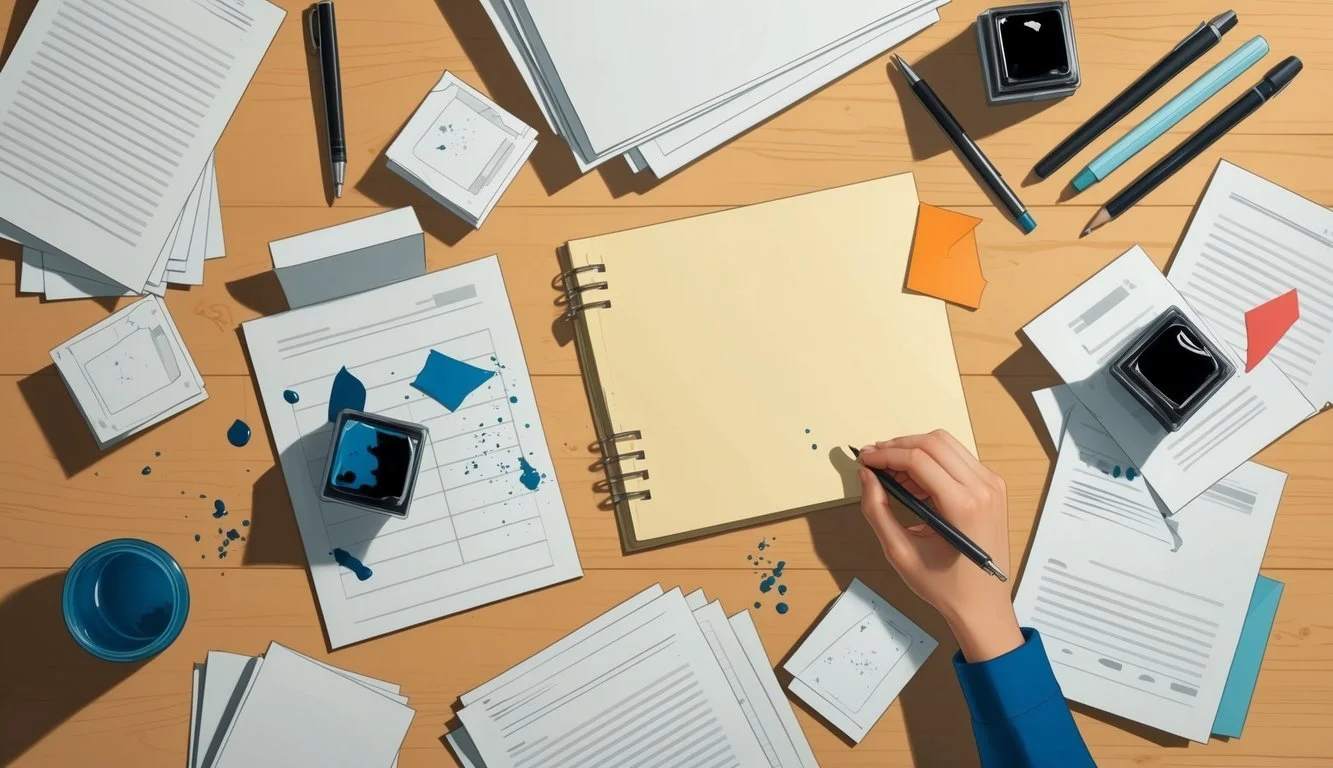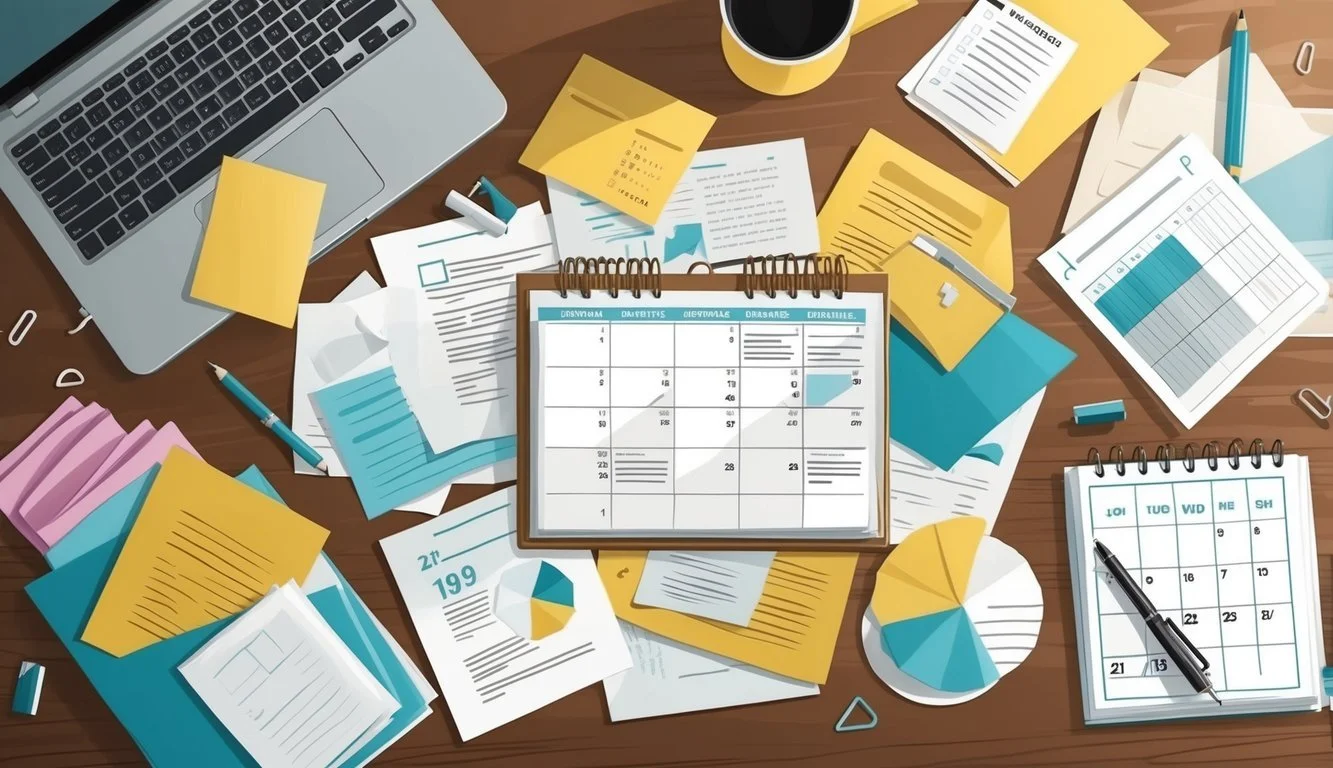Navigating Impulsivity and Inattention to Detail in ADHD
Impulsivity and inattention to detail are two key symptoms associated with Attention Deficit Hyperactivity Disorder (ADHD). These traits can significantly impact daily life, affecting work, relationships, and personal growth. People with impulsivity may act without thinking, while those struggling with inattention often miss important details or have difficulty focusing on tasks.
ADHD manifests in different ways, with three primary types: inattentive, hyperactive-impulsive, and combined. The inattentive type is characterized by difficulties maintaining focus, overlooking details, and struggling with organization. The hyperactive-impulsive type involves restlessness and impulsive behaviors. The combined type exhibits symptoms of both inattention and hyperactivity-impulsivity.
Understanding these symptoms is crucial for proper diagnosis and treatment. While inattentive ADHD is often underdiagnosed, especially in girls, the hyperactive-impulsive type is more commonly identified. Treatment approaches vary depending on the specific type of ADHD, with strategies tailored to address the unique challenges posed by impulsivity and inattention to detail.
Understanding Impulsivity
Impulsivity is a complex behavioral trait characterized by rapid, unplanned reactions without regard for consequences. It involves difficulty controlling urges and a tendency to act without forethought.
The Psychology of Impulsivity
Impulsivity manifests as hasty decision-making, interrupting others, and difficulty waiting one's turn. It often stems from a lack of inhibitory control in the brain's prefrontal cortex. Impulsive individuals may struggle with delayed gratification and exhibit risk-taking behaviors.
Psychologists classify impulsivity into several subtypes:
Motor impulsivity: Acting without thinking
Cognitive impulsivity: Making quick decisions without considering alternatives
Non-planning impulsivity: Lack of forethought for the future
These subtypes can overlap and vary in intensity among individuals. Impulsivity is a key feature of several mental health conditions, including ADHD and bipolar disorder.
Physiological Mechanisms
The brain's reward system plays a crucial role in impulsive behavior. Neurotransmitters like dopamine and serotonin influence impulse control. Imbalances in these chemicals can lead to increased impulsivity.
Brain imaging studies have revealed:
Reduced activity in the prefrontal cortex during impulse control tasks
Heightened activation in reward-related brain regions
Genetic factors also contribute to impulsivity. Certain gene variants affecting dopamine receptors have been linked to impulsive traits. Environmental factors, such as stress or substance use, can exacerbate impulsive tendencies.
Understanding these mechanisms helps in developing targeted interventions for managing impulsivity. Treatments may include medication, cognitive-behavioral therapy, and mindfulness practices to enhance impulse control.
Inattention to Detail
Inattention to detail manifests as difficulty focusing on specifics and a tendency to overlook important information. This cognitive trait impacts task performance and can lead to errors in various contexts.
Characterizing Inattention
Inattention to detail is marked by a struggle to maintain focus on specific elements of a task or situation. Individuals may miss crucial information, make careless mistakes, or fail to notice important details in their environment. This can result in incomplete work, overlooked instructions, or misinterpretation of data.
Common signs include:
Difficulty following multi-step directions
Frequently losing or misplacing items
Struggling to complete tasks accurately
Overlooking errors in written work
These challenges often stem from an inability to sustain attention on detailed aspects of a task, especially when the task is repetitive or perceived as uninteresting.
Cognitive Implications
Inattention to detail affects cognitive processes related to information processing and memory. It can impair:
Working memory: Difficulty holding and manipulating detailed information
Selective attention: Trouble focusing on relevant details while ignoring distractions
Processing speed: Slower completion of tasks requiring attention to specifics
These cognitive effects can lead to decreased productivity and increased error rates in academic, professional, and personal settings. Individuals may struggle with time management and organization due to missed details in schedules or plans.
Strategies to mitigate inattention include:
Breaking tasks into smaller, manageable steps
Using checklists and visual aids
Implementing regular breaks to maintain focus
Creating structured environments to minimize distractions
Assessment Methods
Evaluating impulsivity and inattention requires a multi-faceted approach using diverse tools and techniques. Professionals employ standardized tests, observe behaviors, and gather self-reported information to build a comprehensive picture of an individual's tendencies and challenges.
Standardized Testing
Standardized tests provide objective measures of impulsivity and inattention. The Conners Continuous Performance Test (CPT) is widely used to assess attention and impulsivity. It requires participants to respond to specific stimuli while inhibiting responses to others. The test measures reaction times, errors of omission, and errors of commission.
The Test of Variables of Attention (TOVA) is another computerized assessment tool. It evaluates attention and impulse control by presenting simple visual or auditory stimuli. The TOVA measures response time, variability, and errors.
For children, the Behavior Rating Inventory of Executive Function (BRIEF) assesses various aspects of executive functioning, including impulse control and attention. It gathers input from parents and teachers to provide a comprehensive view of a child's behavior across different settings.
Behavioral Observations
Direct observation of behavior offers valuable insights into impulsivity and inattention. Clinicians and researchers use structured observation protocols to record specific behaviors in natural or controlled environments.
The Classroom Observation Code is a tool used to assess children's behavior in educational settings. Observers record instances of on-task behavior, fidgeting, and impulsive actions at predetermined intervals.
For adults, workplace observations may be conducted using similar methods. Observers note task completion, distractibility, and impulsive decision-making. These observations often complement other assessment methods to provide a more holistic understanding of an individual's functioning.
Time-sampling techniques are frequently employed during observations. This involves recording behavior at set intervals, providing a representative sample of an individual's typical conduct throughout the day.
Self-Report Inventories
Self-report measures allow individuals to provide insights into their own experiences of impulsivity and inattention. The Barratt Impulsiveness Scale (BIS-11) is a widely used self-report questionnaire that assesses three dimensions of impulsivity: attentional, motor, and non-planning.
The Adult ADHD Self-Report Scale (ASRS) is a screening tool that helps identify symptoms of attention-deficit/hyperactivity disorder in adults. It covers both inattention and hyperactivity-impulsivity domains.
For a more comprehensive assessment, the UPPS-P Impulsive Behavior Scale evaluates five facets of impulsivity: negative urgency, lack of premeditation, lack of perseverance, sensation seeking, and positive urgency. This multidimensional approach provides a nuanced understanding of impulsive tendencies.
Self-report inventories often include validity scales to detect inconsistent or biased responding. These measures help ensure the accuracy and reliability of the obtained information.
Implications on Daily Life
Impulsivity and inattention to detail significantly impact various aspects of daily functioning. These traits can create challenges in academic settings, professional environments, and interpersonal relationships.
Academic Challenges
Students with impulsivity and attention issues often struggle to complete assignments on time. They may rush through work, missing important details or instructions. This can lead to lower grades and increased frustration.
Classroom behavior can also be affected. Impulsive students might blurt out answers without raising their hand or interrupt lessons. This can disrupt the learning environment for themselves and others.
Test-taking becomes more difficult. Impulsive students may skip questions or misread important information. They might also struggle to double-check their work, resulting in careless errors.
Workplace Performance
In professional settings, impulsivity and inattention can hinder productivity and job satisfaction. Employees may struggle to meet deadlines or complete tasks accurately.
Multitasking becomes challenging. Switching between projects can lead to errors and incomplete work. Important details might be overlooked, potentially causing problems for colleagues or clients.
Impulsive decision-making can impact career progression. Employees may speak out of turn in meetings or make hasty choices without considering long-term consequences.
Time management issues often arise. Tasks may be left unfinished as attention shifts to new priorities. This can create a backlog of work and increase stress levels.
Social Interactions
Impulsivity and inattention can strain personal relationships. Friends and family members may feel ignored or undervalued when important details are forgotten or overlooked.
Conversations can be challenging. Impulsive individuals might interrupt others or change topics abruptly. This can make it difficult to maintain meaningful dialogues and build deeper connections.
Social cues may be missed due to inattention. This can lead to misunderstandings or awkward situations in social gatherings.
Impulsive behaviors, such as oversharing personal information or making inappropriate comments, can damage relationships. This may result in social isolation or difficulties forming new friendships.
Comorbidity with Other Conditions
Individuals with impulsivity and inattention often experience co-occurring mental health and behavioral disorders. These comorbid conditions can complicate diagnosis and treatment.
ADHD
Attention-Deficit/Hyperactivity Disorder (ADHD) frequently coexists with other conditions. Studies show that up to 80% of adults with ADHD have at least one additional psychiatric disorder.
Common comorbidities include:
Anxiety disorders (25-50%)
Depression (16-31%)
Bipolar disorder (up to 20%)
Learning disabilities (15-45%)
These co-occurring conditions can exacerbate ADHD symptoms and impair functioning. For example, anxiety may increase distractibility, while depression can worsen motivation issues.
Proper diagnosis of comorbid conditions is crucial for effective treatment. Clinicians must carefully assess symptoms to determine if they stem from ADHD or a separate disorder.
Mood Disorders
Impulsivity and inattention often accompany mood disorders like depression and bipolar disorder. These symptoms can be intrinsic to the mood disorder or indicate a separate ADHD diagnosis.
In major depressive disorder, cognitive symptoms may include:
Difficulty concentrating
Indecisiveness
Slowed thinking and reduced attention span
Bipolar disorder can produce impulsivity during manic episodes, leading to:
Risky behaviors
Poor decision-making
Rapid thoughts and speech
Distinguishing between mood disorders and ADHD requires careful evaluation of symptom patterns and duration. Treatment approaches often need to address both conditions simultaneously.
Substance Use Disorders
Impulsivity and inattention are risk factors for developing substance use disorders (SUDs). Individuals with these traits may be more likely to experiment with drugs or alcohol and struggle to control their use.
Research indicates:
15-25% of adults with SUDs also have ADHD
Up to 50% of adolescents with ADHD develop substance abuse issues
Substance use can temporarily alleviate symptoms of inattention or hyperactivity, leading to self-medication. However, this often worsens the underlying condition and creates additional health risks.
Treatment for co-occurring SUDs and attention/impulse control issues typically involves integrated approaches. This may include medication management, cognitive-behavioral therapy, and addiction treatment programs.
Intervention Strategies
Effective interventions for impulsivity and inattention focus on behavioral modification, cognitive enhancement, and pharmacological approaches. These strategies aim to improve self-control, increase focus, and reduce disruptive behaviors.
Behavioral Therapy
Cognitive-behavioral therapy (CBT) is a cornerstone of impulsivity management. It helps individuals identify triggers and develop coping mechanisms. CBT techniques include:
• Self-monitoring to track impulsive behaviors • Relaxation exercises to manage stress • Problem-solving skills training • Role-playing to practice appropriate responses
Parent training is crucial for children with impulsivity issues. Parents learn to:
Establish clear rules and consequences
Use positive reinforcement effectively
Create structured routines
Implement consistent discipline strategies
Mindfulness-based interventions teach present-moment awareness, reducing reactivity. Regular practice can improve attention span and emotional regulation.
Cognitive Training
Cognitive training aims to enhance executive functions, including attention, working memory, and inhibitory control. Techniques include:
Computerized attention training programs
Memory games and puzzles
Task-switching exercises
Time management skill development
Neurofeedback, a form of biofeedback, can help individuals learn to regulate brain activity associated with attention. This technique involves real-time monitoring of brainwaves and providing feedback to encourage desired patterns.
Educational interventions focus on breaking tasks into manageable steps and providing frequent breaks. Assistive technologies, such as reminder apps and organizational tools, support daily functioning.
Medication Management
Stimulant medications are the primary pharmacological treatment for attention deficit hyperactivity disorder (ADHD). These drugs increase dopamine and norepinephrine levels in the brain, improving focus and reducing impulsivity.
Common stimulants include:
Methylphenidate (Ritalin, Concerta)
Amphetamine-based medications (Adderall, Vyvanse)
Non-stimulant options are available for those who don't respond well to stimulants or have contraindications. These include atomoxetine, guanfacine, and bupropion.
Medication effectiveness varies among individuals. Close monitoring by healthcare professionals is essential to adjust dosages and manage potential side effects. Combining medication with behavioral and cognitive interventions often yields the best results.
Support Systems and Resources
Effective support systems and resources play a crucial role in managing impulsivity and inattention to detail. These include tailored accommodations in educational settings, workplace adjustments, and community-based support groups.
Educational Accommodations
Schools can implement various strategies to assist students struggling with impulsivity and inattention. Extended test times allow for thorough review and reduced time pressure. Preferential seating near the teacher minimizes distractions and promotes focus.
Breaking large assignments into smaller, manageable tasks helps prevent overwhelm. Regular check-ins with teachers or counselors provide guidance and accountability. The use of assistive technologies, such as text-to-speech software or digital organizers, can enhance learning and organization.
Individualized Education Programs (IEPs) or 504 plans may be developed to address specific needs and ensure appropriate accommodations are provided.
Workplace Adjustments
Employers can make reasonable accommodations to support employees with attention difficulties. Flexible work schedules allow individuals to work during their most productive hours. Quiet workspaces or noise-cancelling headphones can minimize distractions in open office environments.
Task management tools and software help prioritize and track assignments. Regular breaks throughout the day can improve focus and productivity. Clear, written instructions for complex tasks reduce confusion and errors.
Mentorship programs or designated workplace allies provide additional support and guidance. Regular check-ins with supervisors ensure alignment on expectations and progress.
Support Groups
Support groups offer invaluable peer connections and shared experiences. Local ADHD support groups provide a safe space to discuss challenges and coping strategies. Online forums and social media communities offer 24/7 access to support and resources.
Professional organizations like CHADD (Children and Adults with Attention-Deficit/Hyperactivity Disorder) provide educational materials and advocacy support. Parent support groups offer guidance on navigating school systems and home management strategies.
Cognitive-behavioral therapy groups teach skills for managing impulsivity and improving attention. Mindfulness and meditation groups can help develop focus and emotional regulation techniques.





